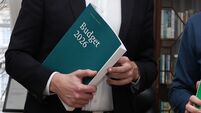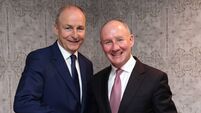The free ride for bond markets may be at an end

The yield on the benchmark 30-year US long bond has risen to around 2.5% from 2.1% back in July.
Ten-year UK gilt yields have more than doubled from lows of near 0.5% in August to close on 1.1% in the past week.
Ten-year German bund yields have risen from -0.15% at the start of this month to around 0%.
Yields on 10-year Japanese bonds have risen 25 basis points from their July lows.
The rise in yields has occurred, despite the ongoing large bond purchase or quantitative easing (QE) programmes by Central Banks in the eurozone, UK and Japan.
These programmes have been an important factor in the sharp fall in bond yields to very low levels over the past three years.
Another key factor has been numerous cuts in interest rates in many countries, with official rates in the eurozone and Japan moving into negative territory.
However, market expectations of further rate cuts in the eurozone, UK and Japan have largely evaporated in the past month. There is also a growing belief that US rates will be hiked before the end of the year.
Meantime, although central banks’ bond buying programmes should continue for some time yet, the size of the monthly purchases is unlikely to be increased any further.
Meanwhile, with monetary policy approaching its limits, there are growing calls that the baton needs to be passed to fiscal policy to help stimulate global growth.
Both the IMF and OECD have stated, in recent reports, that monetary policy has become overburdened and excessive monetary easing is leading to growing financial distortions and risks.
They argue, instead, that the scope for fiscal easing has increased in many countries as interest rates have declined to very low levels, generating budgetary savings.
Low interest rates also raise the amount of debt that countries can sustain and service. Japan, the US and Canada have all started to expand fiscal policy.
The UK Government has also signaled an end to its austerity programme, with the new Chancellor set to loosen fiscal policy in next month’s budget.
However, the OECD believes that more could be done by governments to take advantage of the current exceptionally low interest rates to ease fiscal policy, especially in the eurozone where budgetary policy remains quite tight. Germany, in particular, is a stand-out candidate for fiscal easing.
A loosening of budgetary policy puts upward pressure on bond yields in two ways.
First, by increasing the supply of new government debt issued into the market and second, by raising inflation expectations as it should help boost economic growth.
Meanwhile, oil prices are also on the rise which is prompting a pick-up in inflation.
Last month saw a marked rise in UK inflation to its highest level in almost two years, largely on the back of higher fuel costs and there is more to come in this regard.
US inflation also hit a two-year high last month of 1.5% and is also set to move even higher in the months ahead.
The gilt market, in particular, has been somewhat unnerved at the prospect of a marked rise in UK inflation as a result of the sharp drop in sterling.
The UK currency has fallen by over 20% against the euro and the dollar in the past year. Import prices are set to rise sharply, as a result.
The UK imports over half its food and nearly half of its energy requirements, so the rise in consumer prices is likely to be pronounced. UK inflation could pick up to 3.5% by 2018.
Overall then, it is not that surprising that we are beginning to see some upward pressure on longer-term interest rates.
However, we are unlikely to be entering a bear market in bonds where yields rise sharply, as monetary policy is set to remain very loose. Nonetheless, the low point for yields in this cycle may well have passed.














